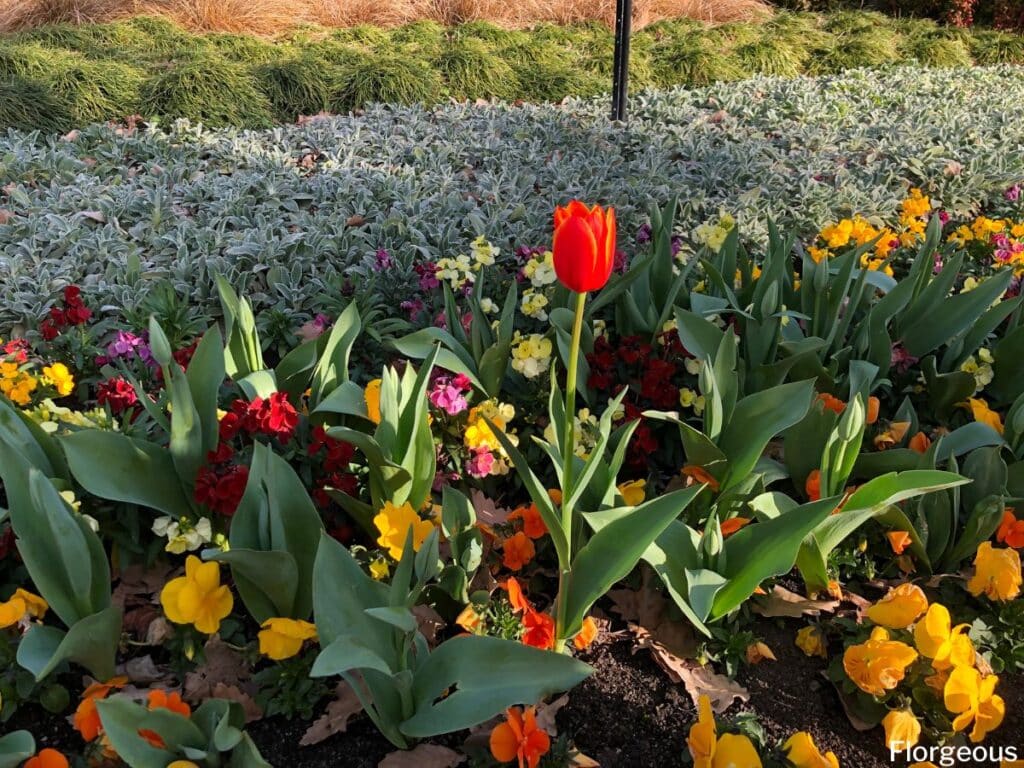Tulips (Tulipa) are some of the most beautiful flowers in the world. There are about 75 different species of tulips that you can collect and grow if you want a vibrant spring garden.
These lovely flowers can, however, be a little bit tricky to grow. Tulip enthusiasts need to take special care to plant tulips at the right time of the year (early fall) in well-drained soil, and in the right conditions.
While you are planning the perfect tulip garden, you might also want to consider adding some additional flowering plants to your tulip garden. Succession planting can offer quite a few benefits.
In this guide, we are going to take a look at some of the best foliage plants to plant with tulips, including what to plant after tulips die.
Benefits of Adding Company Plants to Tulips
Once you know how to grow tulips, planting some other flowers with your tulip bulbs can do wonders for your garden.
Here is a quick look at the top reasons to add other flower species to your garden beds.
Cover Blank Spots and Dying Leaves
Tulips are technically perennial plants, however, not all varieties of this plant species will act like perennial plants. Centuries of hybridizing or cross-breeding have transformed many tulip species to a point where they act like annual plants.
While your tulips bloom will look great during early spring, these garden beds can soon start to look empty and faded as the tulip foliage starts to wither and die.
This is where succession planting comes in. Adding other plants like perennials as neighboring foliage plants is superb for covering the dying tulip leaves of tulip foliage and for filling in blank spots that are left behind after the flowering season. Summer blooming flowers are especially a good option because your garden bed will stay in full bloom for much longer.
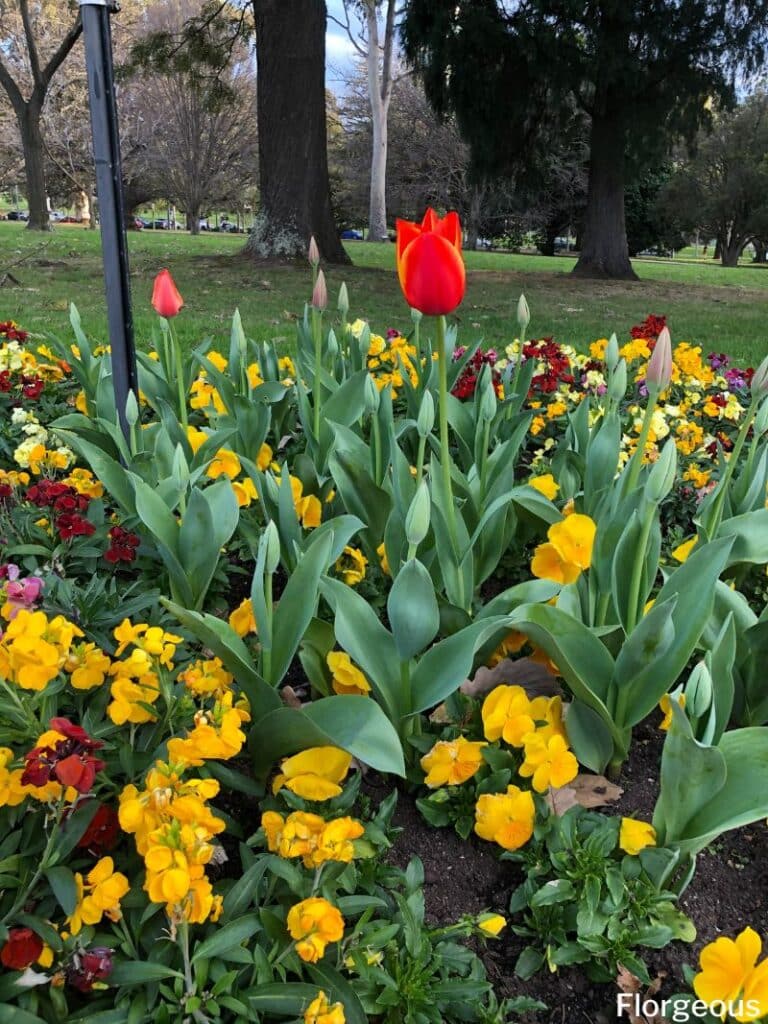
Enhance Your Garden Appeal
Tulip fields can look breathtaking, especially if you combine different tulip colors. Adding more plants can make your garden look even better. This is especially true if you add foliage or flowering plants that complement the hues of your tulip growths.
Add a Backdrop
Companionable plants can also make your tulip flowers stand out even more. These additional growths will act as a backdrop to cover the soil or conceal the tulip plant’s bright green leaves so certain flower colors can stand out a lot more.
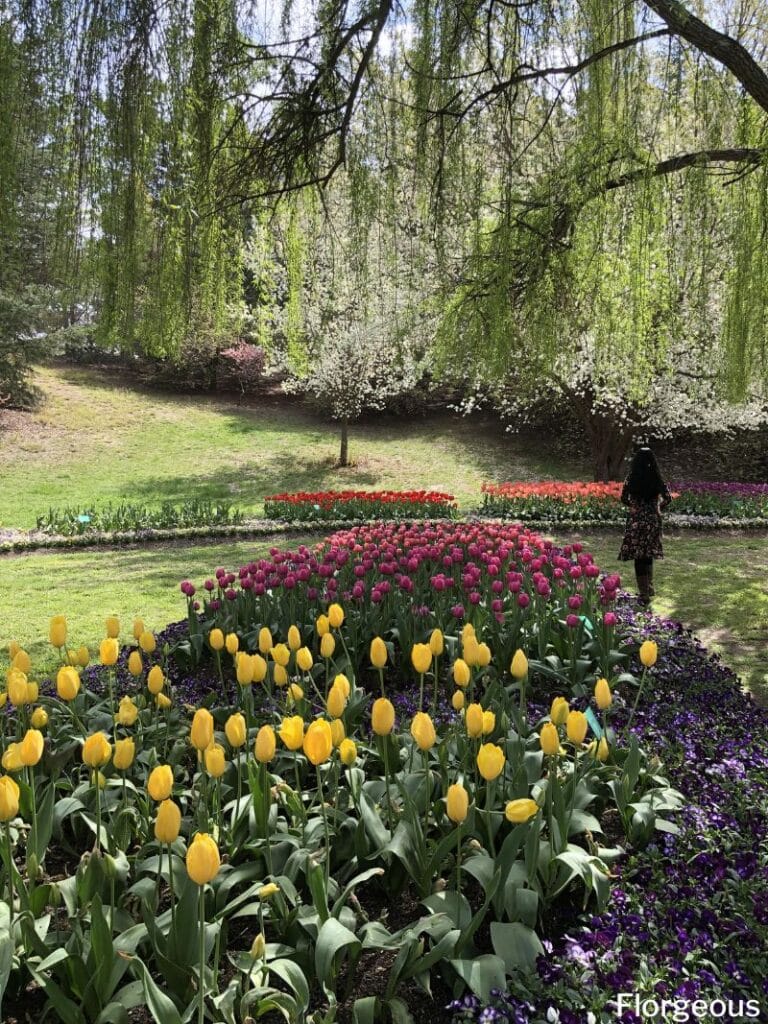
What to Plant with Tulips
Before you decide on the right comrade plants for your tulip garden, you should take some time to plan your garden. The most important factor to keep in mind is to select a companion plant that is going to complement your tulips or make them stand out better.
For example, growing red flowers in a garden filled with red tulips could make your tulips too unnoticeable.
Let’s take a look at the top tulip companion plants to grow along with these spring bulbs.
Catnip
Catnip (Nepeta cataria) is our main suggestion if you need a good backdrop that will make your spring flowering bulbs stand out. The bushy plant also does a good job of concealing the fading tulip foliage. This is because catnip doesn’t have any flowers that can draw your attention away from those beautiful flowers.
Catnip does, of course, have additional uses and benefits. This plant with its minty green leaves is known to attract cats and can be used for making catnip tea. Catnip oil can also be used to treat headaches.
This low-maintenance plant only needs occasional trimming during early spring. The rabbit-resistant growth is also very sturdy since it can grow in just about any type of soil, it isn’t susceptible to too many diseases, and catnip is a perennial plant that will stay vibrantly green throughout the year.
Bleeding heart
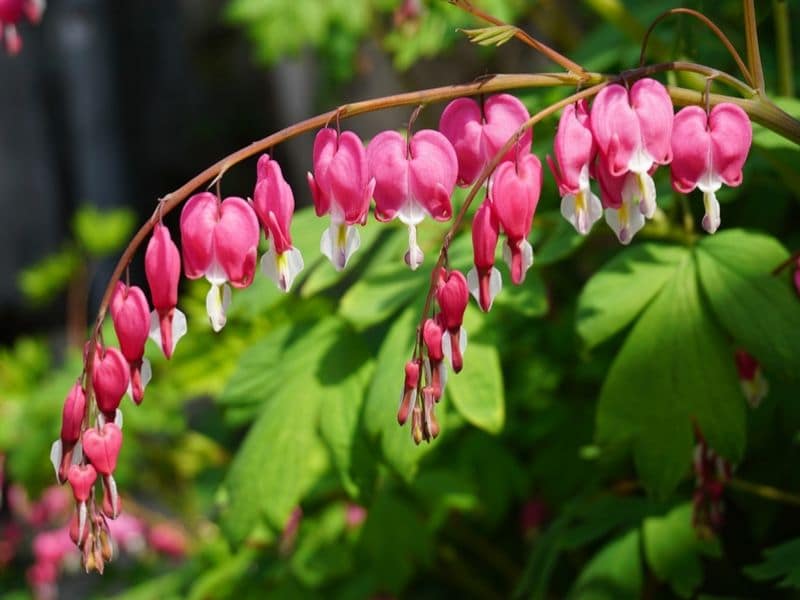
The bleeding heart (Lamprocapnos spectabilis), is a terrific flower plant if you want to compliment your tulips. These gorgeous flowers have a very distinctive bell shape that is eye-catching the foliage will do a great job at covering some blank spots between your tulips.
The Bleeding heart tends to bloom during early to late spring and is sure to add plenty of color and charm to your garden. These perennials do however die back during early summer which means it isn’t the best plant for covering your gardens when the tulips fade.
We still recommend this plant with tulips because it is very easy to grow and it is extremely pest-resistant. Bleeding hearts are available in a couple of varieties. We do feel that the variety with coral bells can be a great selection with purple flamed orange tulips or bulbs with a cooler tone.
Brunnera
If you are looking for what to plant with tulips for summer, Brunnera is another great flowering plant.
The Brunnera(Brunerra macrophylla) is more commonly referred to as the forget-me-not. This perennial plant with its blue flowers is also a good option if you need a plant that can compliment your tulip bulbs because they form a delicate little flower that won’t draw too much attention away from the large tulip bells.
This perennial will flower throughout spring and will keep highlighting your garden until late summer with its beautiful blooms. This will give your tulips a layered look during early spring. And when those blooms do fade, the striking heart-shaped leaves will keep the garden bed covered and beautiful.
The forget me not is also pretty easy to grow since these floral plants are pest-resistant and easy to maintain. These blue flowers can be planted in partial shade, making them ideal for a tulip garden.
Tickseed
Tickseed (Corepsis), also called calliopsis, is a perfect companion if you prefer warm-toned plants. Tickseed flowers won’t bloom along with your tulip bulbs. Instead, they will start to bloom in early summer when your tulips wilt. This makes it an ideal infill plant or backdrop plant since the tickseed blooms won’t interfere with or draw attention away from your growing tulips.
These bright-blooming plants are available in perennial and annual species. Since you are pairing them with tulip bulbs, we do recommend perennial varieties. Annuals will also bloom after the tulips die away but planting perennials is a good way to keep garden maintenance low.
Tickseed flowers are fairly easy to maintain since you only need to deadhead spent blooms during the growing season. These plants are also relatively drought resistant but do require a bit more water if it is particularly hot and dry. This foliage is ideal for a hardiness zone in your garden.
Grape hyacinth
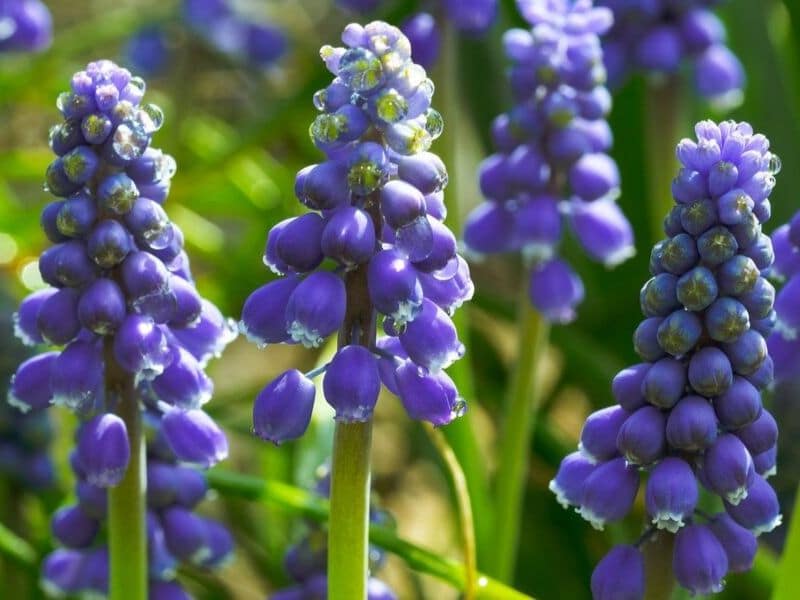
Grape hyacinths (Muscari spp.) are excellent companions for tulips (Tulipa spp.) in the garden, creating a stunning display of color and texture. These charming, low-growing bulbs produce clusters of small, bell-shaped flowers in shades of blue, purple, or white, complementing the vibrant blooming tulips perfectly.
One of the main reasons grape hyacinths make great tulip companions is their contrasting blooming times. While tulips typically bloom earlier in the spring, grape hyacinths tend to flower slightly later, extending the overall blooming period and providing continuous color in the garden.
Additionally, grape hyacinths’ compact size and delicate appearance create a beautiful backdrop for taller tulip varieties. Planted in drifts or clusters around tulips, these purple flowers add depth and dimension to flower beds and borders, enhancing the overall aesthetic appeal.
Also, grape hyacinths are easy to take care of once established, making them perfect for planting with tulips. These plants do well in soil that drains well and in full sun to light shade. They can handle a lot of different growing situations.
Overall, plant grape hyacinth with tulips creates a harmonious and visually appealing garden display, combining the bold, showy tulip blooms with the charming, delicate flowers of grape hyacinths for a truly enchanting spring garden scene.
Daylilies
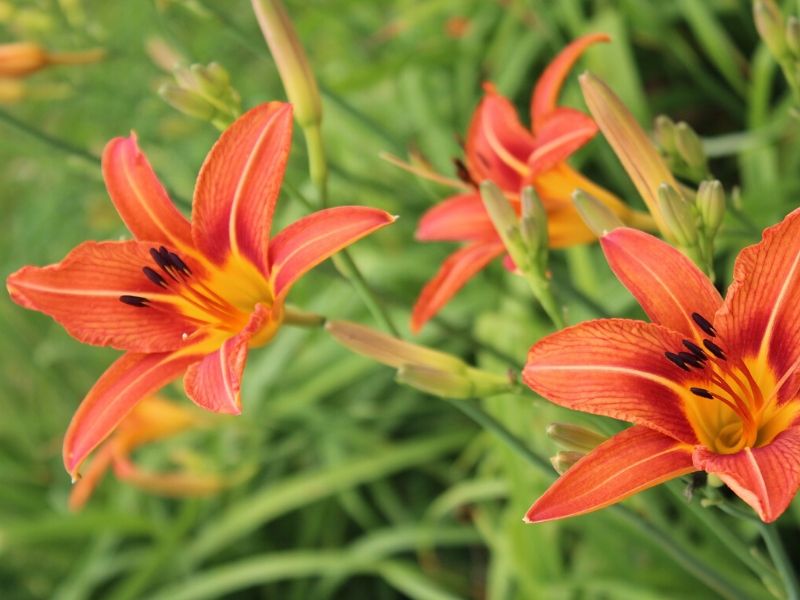
Daylilies (Hemerocallis lillioasphodelus) is a flower that gardening enthusiasts bred specifically for its gorgeous blooms. These beautiful perennial plants form large kelps that typically last a day and there are a huge variety of colors to choose from since thousands of cultivars have already been registered. You can certainly find a complementary shade for your flower bed when planting tulips.
These low-maintenance plants are ideal for your tulip garden because they can add a lot of texture. These flowers are good tulip companions since they will bloom when your tulips die off. You can add these plants with tulips in full sun or add them semi shade gardens.
Daylilies are also an appealing choice because they are very easy to maintain. You only need to deadhead during the blooming season and you can trim the plant back if it gets out of hand or when the foliage starts to turn yellow.
See more: Companion plants for daylilies
FAQs
Do tulips like pots or ground?
Tulips can grow well both in pots and in the ground, as long as they have well-drained soil and adequate sunlight.
Do roses and tulips go together?
Yes, roses and tulips can complement each other in a garden or floral arrangement, as they both offer vibrant colors and varied textures.
What flowers go well with white tulips?
Flowers like daffodils, hyacinths, and blue muscari can pair beautifully with white tulips, creating a harmonious and elegant display.
Final Thoughts
We hope that this guide helped you find some good fellow plants for tulips. We are certain that any of these will bring lots of joy and color to your garden. If you want to learn even more about tulips then we welcome you to have a look at some of the other guides we have on our site including different tulip types you can grow.
See more: What do tulips represent?

